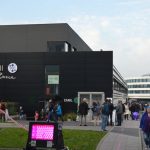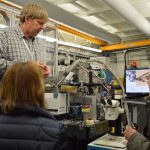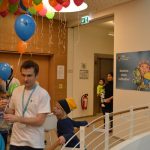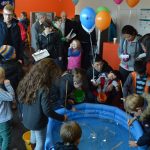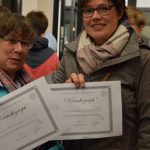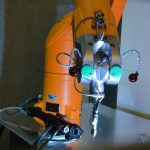
Hands-on science inspires Hamburg
20,000 visitors get sneak peek at giant particle accelerators at DESY DAY in Hamburg
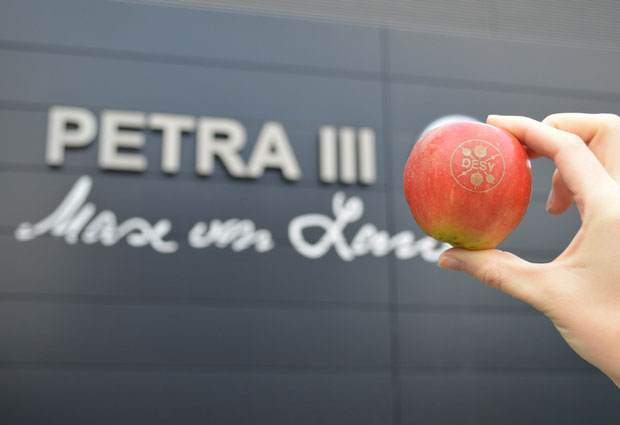
By Linda Schädler
A giant particle accelerator may not be the typical place to hang out on a Saturday night, but on 4 November, thousands of people made their way to DESY (Deutsches Elektronen-Synchrotron), as part of the biennial Hamburg Night of the Sciences.
Visitors uncovered the secrets of the three famous X-ray radiation sources PETRA III, FLASH and XFEL, through talks and practical activities. EMBL’s site on the DESY campus surprised and entertained guests with insights into the tiny molecular machines that build the basis of life: proteins.
Deciphering proteins with X-rays
DESY’s three large particle accelerators create X-rays and serve as super-microscopes, which are used to explore the microcosm in all its variety – from how particles interact to how nanomaterials behave in certain conditions.
The tightly-collimated beams that PETRA III generates are up to 50 times finer than a human hair and make it possible to study ultra small samples, such as tiny protein crystals. EMBL Hamburg operates three experimental stations at PETRA III, deciphering protein structures on the atomic level.
Beamline tours
The beamline tours at the PETRA III storage ring were one of the major attractions on DESY DAY, allowing visitors to get a glance of the 2.3 kilometre-long accelerator and speak to EMBL scientists about the the cutting-edge research taking place there.
I got lots of inquisitive and smart questions – especially from kids
Thomas Schneider, group leader and facility head at EMBL Hamburg, was one of the scientists guiding visitors through the experimental hall. “Many people don’t understand the kind of work we do here, so it’s extremely important to explain, engage and inspire them,” said Dr Schneider. “During today’s tours, I got lots of inquisitive and smart questions – especially from kids.”
Budding crystallographers
The EMBL Hamburg team showcased their research into structural biology through beamline tours and family-friendly activities exploring protein crystals. Looking at real protein crystals under the microscope and giving MARVIN, EMBL’s crystal-harvesting robot, a helping hand fascinated even the youngest visitors. EMBL’s most popular activity, the crystal fishing game, attracted more than 500 budding crystallographers, who proudly left the crystal-fishing pool with a smile on their face and a fresh certificate in their hands.
Battling infectious diseases
EMBL Hamburg is also part of a new initiative from several research organisations across Northern Germany: the Centre for Structural Systems Biology (CSSB). The CSSB, a joint cooperation of nine partner institutions, opened in April 2017, and devotes itself to the study of infection biology and medicine. At the CSSB, close to 180 international researchers — among them EMBL’s Löw and Kosinski groups — work together on elucidating the structures, dynamics and mechanisms of infection processes in viruses, bacteria and parasites.
Guided tours, life science slams and hands-on activities, such as the “Build your own germs” game – these were just some of the ways in which visitors of all ages learned about the latest discoveries in infectious diseases, such as malaria or tuberculosis.
The next Night of the Sciences/DESY DAY is set to take place in November 2019. To keep up to date with the expeditions into the microcosm, visit DESY online.
